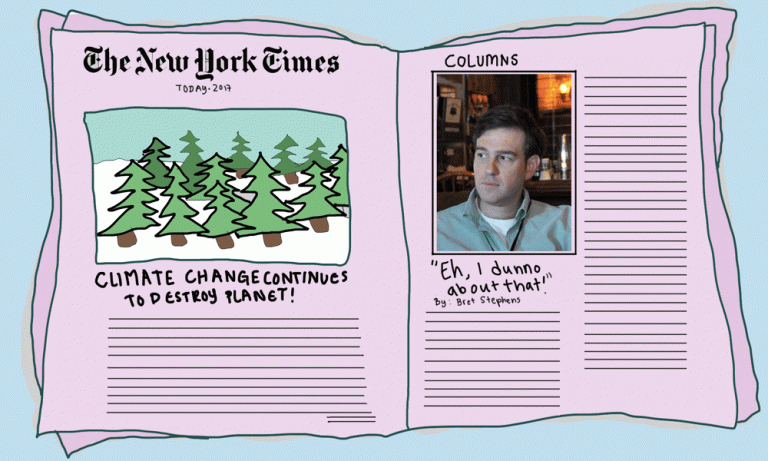
Walker Laughlin
After a sour election year exposing the depths of the cultural divide between the left and right, The New York Times seems eager to affirm that it serves more than the so-called “mainstream liberal media” commentary. Even as the newspaper’s editorial page continues to lean center-left, Editorial Page editor James Bennet has outlined an ambitious vision of diversification. Bennet recently swore to “foster collegial debate among brave, honest journalists with very different points of view.”
In practice, that means hiring the more sophisticated side of conservative punditry: those elite-educated #NeverTrump-ers beloved by the left as alternatives to the radio rancor of Glenn Beck or the spineless Trump apologias of Sean Hannity.
The Times is right to cultivate diverse commentary. Much was written last year of media echo chambers pushing both sides of the political spectrum into increasingly polarized territory. Listening to the other side at the very least prompts an exercise in counter argument. Ideally, it brings more nuance to issues that would otherwise be reduced to Facebook soundbites from a concerned friend.
There is one area, however, that does not invite a democratic commitment to diverse opinion. That is the realm of scientific fact. When the Times hired Bret Stephens, who might be called a radically skeptical climate change skeptic, they showed an overzealous commitment to Bennet’s program at odds with the paper’s original goals.
Stephens debuted on Apr. 28 with the provocatively titled “Climate of Complete Certainty.” Here he wrote: “Anyone who has read the 2014 report of the Intergovernmental Panel on Climate Change knows that, while the modest warming of the earth since 1880 is indisputable, as is the human influence on that warming, much else that passes as accepted fact is really a matter of probabilities.” (Emphasis added.)
Stephens goes on to chastise what he sees as a hyperbolic presentation of climate change risks by cocksure environmentalists with possible “ideological intentions” ` in short, its less of a response to demonstrated physical realities and more of a political program weaponizing a misplaced authority in science.
But science is, more than Stephens and the opinion branch of the Times seem to understand, a wonderfully apolitical sector. Data does not care whether a solar panel company wins subsidies or whether Al Gore breaks the box office.
Here is where Stephens gets it wrong. Weighing the risks of climate change comes not through subjective labels like “modest warming,” available to anyone with a computer keyboard and a motive. Weighing the risks of climate change comes from examining what global warming has already done in order to see where it may go — an empirical approach of objective observation and rational extrapolation.
For the third year in a row, 2016 set the record for the highest ground temperatures in recorded history. That is a scientific fact, reported by a consensus of independent agencies and organizations. The Great Barrier Reef, where ocean temperatures have risen more than 1.5 degrees Fahrenheit since the late 19th century, recently lost two-thirds of its coral in some sections, threatening not only a cornerstone of Australian tourism but, through reasonable extrapolation, the future livelihoods of seafood-dependent island nations in similar environments. Such are the facts reported by the same newspaper Stephens now writes for.
To make it clear, climate change presents marked effects within the window of Stephens’ “modest” warming. Global warming is not a future phenomenon abstracted by vague areas of probability. It is a current reality. To weigh the risks of this reality as it gets worse is not a matter of editorial opinion, but one of modeling. If Stephens can earn a Ph.D., draft a model, and have it supported by a majority of peer reviewers, he is more than welcome to write a column endorsing it.
With nearly 10 million readers, the Times can provide an outlet for otherwise ignored voices — or an organ for the uninformed and irresponsible. Bennet should hope to better meet the promise of the former. The first step involves understanding facts and models for what they are. Next comes the question that a diverse editorial board would enrich: should do anything about the problems this information presents?
















